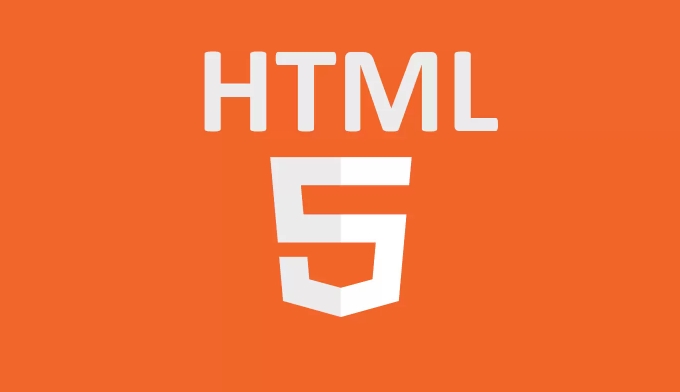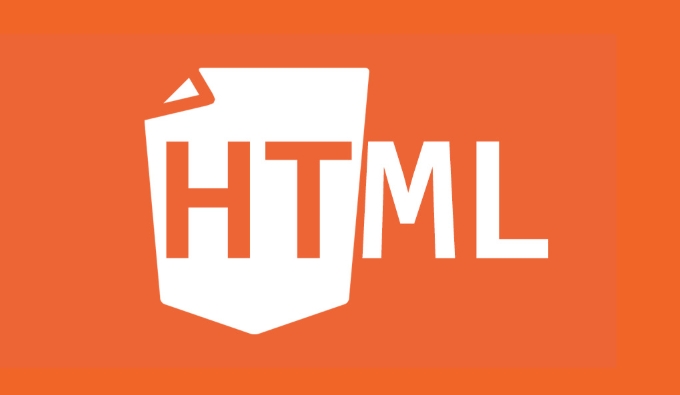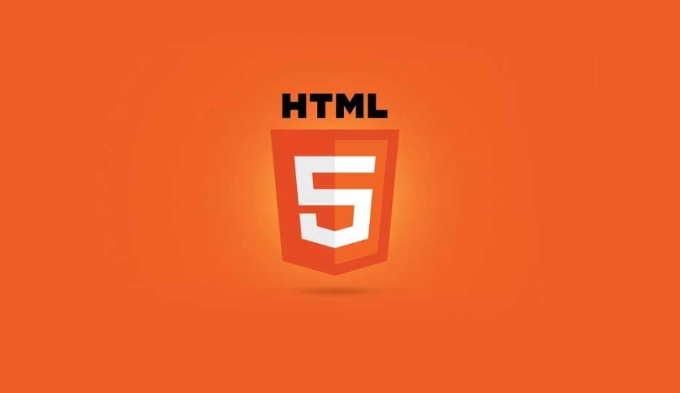Understanding the purpose and usage of HTML attributes.
Jul 02, 2025 pm 03:37 PMHTML attributes are the way to add extra information to HTML tags, used to configure elements or adjust their behavior. Common attributes include class, id, src, alt, placeholder, etc. They are written in the start tag in the form of name="value", such as href specifying the link address, and alt provides alternative text for the image. Attributes are widely used, such as required to set the input box, triggering JS functions (onclick), and boolean attributes (disabled, checked) to take effect without a value. When using it, you should use quotes to wrap the attribute value, especially if it contains spaces or special characters; specific attributes are only applicable to the corresponding tags; custom attributes are recommended to use data-* form; attribute names are recommended to be in the same lower case. Correct use of HTML attributes can improve web page flexibility and maintainability, and better cooperate with CSS and JavaScript.

The role and use of HTML attributes are not complicated, but understanding how they work can help you write clearer and more effective web code.

Simply put, HTML attributes are a way to add extra information to HTML tags. This information is usually used to configure an element or adjust its behavior so that the browser knows how to deal with it.

What are HTML attributes?
HTML attributes are generally written in the starting tag, consisting of attribute names and attribute values, and the format is name="value" . for example:
<a href="https://example.com">Click here</a>
href here is the property, and its value is "https://example.com" . When the browser sees this link, it will know where to jump after clicking.

Common properties are:
-
class: used to set CSS style or JavaScript operations -
id: uniquely identify an element -
src: Specify the path to the image or script -
alt: Provides alternative text for images -
placeholder: prompt text in the input box
What are the uses of HTML attributes?
Attributes are mainly used to tell the browser "how to do this element". for example:
- Control whether the input box is required (use
required) - Describe the picture (using
alt, it is important for barrier-free access) - Set the behavior of the button (trigger the JS function with
onclick)
Some properties do not require values ??and work as soon as they appear, such as disabled or checked :
<input type="text" disabled>
This is called a Boolean attribute. Existence is "true", and not existence is "false".
What should you pay attention to when using HTML attributes?
It is best to include quotes in attribute values, especially when they contain spaces or special characters.
<!-- Not recommended-> <div class=my-class name=John Doe></div> <!-- Recommended-> <div class="my-class" name="John Doe"></div>
Certain attributes can only appear on specific tags, such as
hrefcan only be used in<a></a>tags, andsrcis generally only used in<img alt="Understanding the purpose and usage of HTML attributes." >or<script></script>.Custom attributes can be used in the form of
data-*, such asdata-user-id="123", which is both legal and convenient for subsequent reading using JS.Attribute names are case-sensitive, but it is recommended to use lowercase to maintain consistency.
Basically that's it. Although HTML attributes seem to be just a few words in the tag, if used properly, they can make the page more flexible, maintainable, and work better with CSS and JavaScript.
The above is the detailed content of Understanding the purpose and usage of HTML attributes.. For more information, please follow other related articles on the PHP Chinese website!

Hot AI Tools

Undress AI Tool
Undress images for free

Undresser.AI Undress
AI-powered app for creating realistic nude photos

AI Clothes Remover
Online AI tool for removing clothes from photos.

Clothoff.io
AI clothes remover

Video Face Swap
Swap faces in any video effortlessly with our completely free AI face swap tool!

Hot Article

Hot Tools

Notepad++7.3.1
Easy-to-use and free code editor

SublimeText3 Chinese version
Chinese version, very easy to use

Zend Studio 13.0.1
Powerful PHP integrated development environment

Dreamweaver CS6
Visual web development tools

SublimeText3 Mac version
God-level code editing software (SublimeText3)
 PHP regular expression in action: matching HTML attributes
Jun 22, 2023 pm 09:29 PM
PHP regular expression in action: matching HTML attributes
Jun 22, 2023 pm 09:29 PM
In web development, HTML attributes are one of the very important elements. However, in actual development, it is often necessary to match and extract attributes. At this time, regular expressions become a very effective tool. This article will introduce how to use PHP regular expressions to match HTML attributes, and explain it with actual cases. First, we need to understand the general structure of HTML attributes. An HTML attribute usually consists of an attribute name and an attribute value, connected by an equal sign. For example: class="container
 How to use PHP to develop a scheduled refresh function for web pages
Aug 17, 2023 pm 04:25 PM
How to use PHP to develop a scheduled refresh function for web pages
Aug 17, 2023 pm 04:25 PM
How to use PHP to develop a scheduled refresh function for web pages. With the development of the Internet, more and more websites need to update display data in real time. Refreshing the page in real time is a common requirement, which allows users to obtain the latest data without refreshing the entire page. This article will introduce how to use PHP to develop a scheduled refresh function for web pages and provide code examples. The simplest way to implement scheduled refresh using Meta tag is to use HTML Meta tag to refresh the page regularly. In HTML<head>
 Using $attrs to pass HTML attributes in Vue
Jun 11, 2023 am 11:35 AM
Using $attrs to pass HTML attributes in Vue
Jun 11, 2023 am 11:35 AM
Vue is a popular JavaScript framework for building modern web applications. Vue provides a powerful component system that allows you to break down UI elements into reusable parts and combine them in a maintainable way. Vue's component system also provides a convenient way to pass data and properties between components. One very useful way to pass attributes is $attrs. $attrs is a special object provided by Vue for passing the HTML attributes of a component to its subgroups
 HTML vs. CSS vs. JavaScript: A Comparative Overview
Apr 16, 2025 am 12:04 AM
HTML vs. CSS vs. JavaScript: A Comparative Overview
Apr 16, 2025 am 12:04 AM
The roles of HTML, CSS and JavaScript in web development are: HTML is responsible for content structure, CSS is responsible for style, and JavaScript is responsible for dynamic behavior. 1. HTML defines the web page structure and content through tags to ensure semantics. 2. CSS controls the web page style through selectors and attributes to make it beautiful and easy to read. 3. JavaScript controls web page behavior through scripts to achieve dynamic and interactive functions.
 What are the main application areas of JavaScript?
Mar 23, 2024 pm 05:42 PM
What are the main application areas of JavaScript?
Mar 23, 2024 pm 05:42 PM
What are the main application areas of JavaScript? JavaScript is a scripting language widely used in web development to add interactivity and dynamic effects to web pages. In addition to being widely used in web development, JavaScript can also be used in various other fields. The main application areas of JavaScript and corresponding code examples will be introduced in detail below. 1. Web development The most common application field of JavaScript is in web development, through Java
 What are boolean attributes in HTML? Give some examples.
Apr 25, 2025 am 12:01 AM
What are boolean attributes in HTML? Give some examples.
Apr 25, 2025 am 12:01 AM
Boolean attributes are special attributes in HTML that are activated without a value. 1. The Boolean attribute controls the behavior of the element by whether it exists or not, such as disabled disable the input box. 2.Their working principle is to change element behavior according to the existence of attributes when the browser parses. 3. The basic usage is to directly add attributes, and the advanced usage can be dynamically controlled through JavaScript. 4. Common mistakes are mistakenly thinking that values ??need to be set, and the correct writing method should be concise. 5. The best practice is to keep the code concise and use Boolean properties reasonably to optimize web page performance and user experience.
 Application and practice of ChatGPT PHP in website development
Oct 27, 2023 pm 06:40 PM
Application and practice of ChatGPT PHP in website development
Oct 27, 2023 pm 06:40 PM
Application and practice of ChatGPTPHP in website development Introduction: With the continuous development of artificial intelligence technology, Chatbot has become a hot topic of concern to many website developers. Chatbot can have instant conversations with users, greatly improving user experience, and plays an important role in customer service, marketing, information interaction, etc. ChatGPT is a Chatbot toolkit based on the open AIGPT-3 model, which can help PHP developers quickly build intelligent dialogue systems.
 Why are HTML tags important for web development?
May 02, 2025 am 12:03 AM
Why are HTML tags important for web development?
May 02, 2025 am 12:03 AM
HTMLtagsareessentialforwebdevelopmentastheystructureandenhancewebpages.1)Theydefinelayout,semantics,andinteractivity.2)SemantictagsimproveaccessibilityandSEO.3)Properuseoftagscanoptimizeperformanceandensurecross-browsercompatibility.






